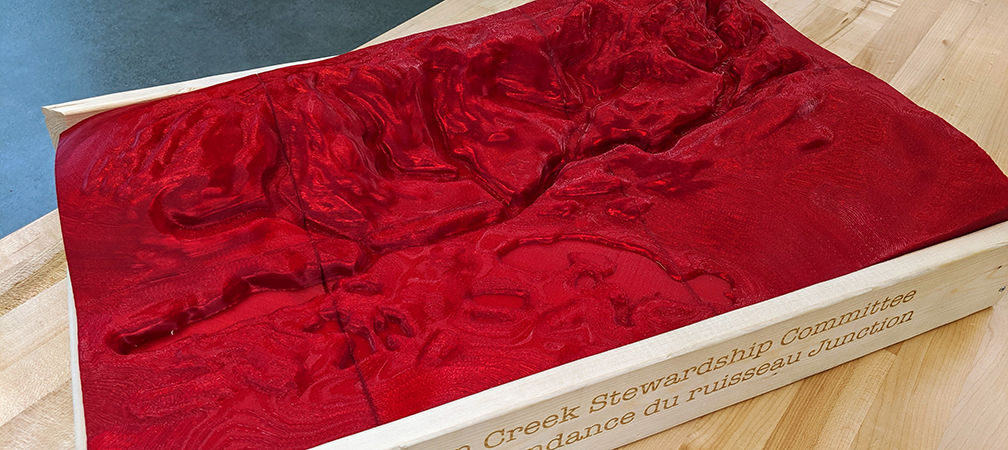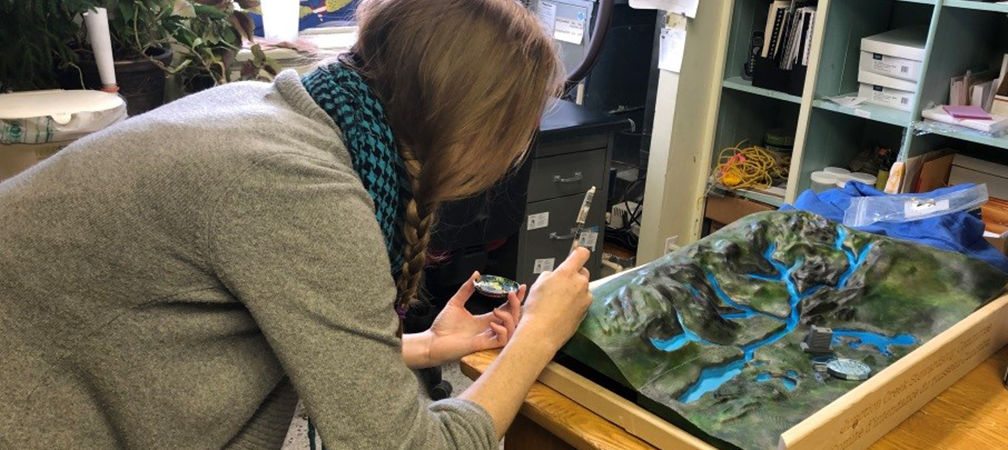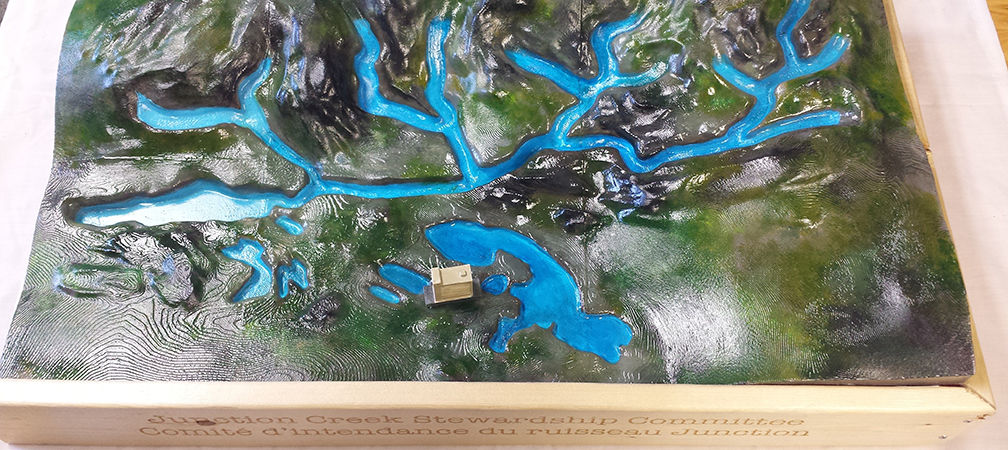Ontario Nature Blog
Receive email alerts about breaking conservation
and environmental news.
© Lora Denis
Junction Creek 3-D Watershed model © Junction Creek Stewardship Committee
Everyone lives in a watershed and has an impact on the health of local streams, rivers and lakes. The Junction Creek Stewardship Committee is helping students and citizens of Greater Sudbury understand how contaminants enter their waterways, and are sparking discussion about what residents can do to have a more positive impact on their watershed.

Litter and plastic-waste are examples of common contaminants in urban waterways, and items that are frequently removed by the stewardship committee and community volunteers. At each two-hour clean-up activity, volunteers will remove an average of 300 plastic wrappers, 300 plastic bags and 100 plastic bottles along Junction Creek.

A new project supported by the EcoAction Community Funding Program, has allowed the stewardship committee and Plastic-Free Greater Sudbury to work together to conduct more clean-ups and collect important data on litter and plastic-waste in Greater Sudbury’s urban watershed. In addition, the stewardship committee has developed an interactive ‘Polluted Waters’ educational program to raise awareness and target issues of litter and plastic-waste in the community.

What separates this educational program from others is the custom 3-D watershed model of the local waterway. The model is a representation of the urban sections of Junction Creek and provides a visual aid for participants to make the connection to local water quality issues, and to inspire positive change.
The 3-D watershed model took two months to manufacture and was a collaborative effort between local organizations and academic institutes. The model was designed and printed at Laurentian University’s Innovation and Commercialization Centre with help from faculty Daryl Dominique student André Sokolow. They used geospatial elevation data of the Junction Creek watershed, courtesy of Conservation Sudbury, as reference for designing the model and even included Sudbury’s well-known landmark, the Big Nickel. The model was then painted by the Junction Creek Stewardship Committee staff to add the final touches.
The watershed model will be used at school programs and outreach displays to engage approximately 3,000 people every year in watershed stewardship, making for an excellent tool in long-term environmental restoration and conservation in Greater Sudbury.
To learn more about Junction Creek Stewardship Committee’s programs, please visit their website junctioncreek.com, or contact them at programs@junctioncreek.com or (705) 525-8736.

Gananoque Lake Nature Reserve © Smera Sukumar